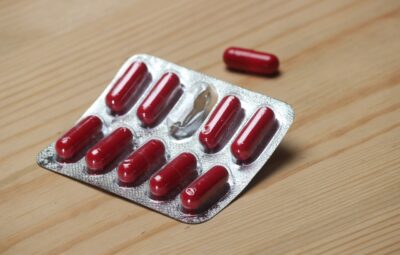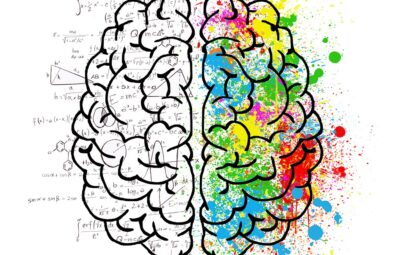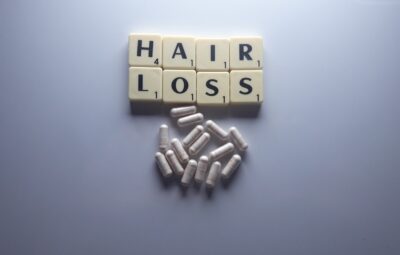Estrogen is a hormone that promotes the growth of the female reproductive organs and helps keep them functional. It is produced in large quantities in the early part of the menstrual cycle, which refers to the two-week period prior to ovulation. Estrogen is secreted by the ovaries, fat cells, and adrenal glands, linked to fertility and the amount of body fat. Estrogen plays an important role in forming the uterine wall for the menstrual cycle, promoting the growth of the egg follicle, advancing the expansion of breast tissue, preserving bone density, and regulating glucose and lipid metabolism.
Having high levels of estrogen and having an abundance of estrogen compared to other hormones are not necessarily synonymous. This is due to the fact that estrogen dominance refers to the balance between estrogen and progesterone. If the amount of estrogen is greater than progesterone yet still within the standard measurements, this is called estrogen prominence. The following three scenarios are present: elevated estrogen with typical progesterone, increased estrogen with decreased progesterone, and normal estrogen with reduced progesterone. So what are some symptoms for estrogen dominance? Here are 10 symptoms of estrogen dominance.
1. Anxiety
Feelings of worry, anxiety, and fear can take charge of components of one’s day. Estrogen dominance is one of the indications of this condition as well. Research determined that supplying rats with the correct dose of estrogen can bring them into balance, resulting in a decline in their anxious and depressive behaviors. Estrogen is important in controlling the way our emotions are handled, which is why when there is an imbalanced of estrogen and progesterone, feeling anxious can be a side effect of having too much estrogen.
2. Bloating
Experience of swelling or puffiness in the abdomen is a sign of too much estrogen in the body. A research study revealed that when estrogen levels were high during the luteal phase, water and sodium retention also heightened. The reason for this is that estrogen lessens the point at which water is taken back into the body. Arginine vasopressin is the hormone that is responsible for the returning of water to the organism. When estrogen is higher than progesterone, the body’s threshold for holding water is reduced, meaning more of it is stored rather than released in urine, making the body swell.
3. Mood Swings and Irritability
Feeling emotionally unstable or experiencing changes in mood are both signs of estrogen dominance. The levels of estrogen and progesterone in the body have a major influence on both mental state and cognitive abilities. Estradiol and estrone are distinct forms of the estrogen compound our bodies create. Estradiol connects to both the alpha and beta forms of the estrogen receptor, but estrone only adheres to the beta variety of the estrogen receptors. It has been shown that estradiol is helpful in regulating mood swings and has a positive effect on mental health when consumed in the appropriate quantities since it binds to both alpha and beta receptors. An imbalance between estrogen and progesterone can result in temperamental behavior, along with unstable emotions and mood swings, which are all signs of excessive estrogen.
4. Heavy Bleeding
Menstrual bleeding is considered to be heavy if more than 80 milliliters of blood are discharged during a menstrual cycle. However, according to reports, half of the women who claim to have heavy bleeding do not meet the criteria of 80 milliliters. The usual amount of blood lost is no more than 50-60 milliliters. Bleeding heavily is a result of polyps, which is when enlarged tissue develops inside the lining of the uterus. An overabundance of estrogen leads to an increase in the endometrial wall during menstruation, which causes excessively heavy periods.
5. Brain Fog
Inability to concentrate, disorientation, and memory lapses can all be attributed to the condition known as brain fog, which can also be a sign of having too much estrogen. Research discovered that estrogen receptors have a crucial influence on cognition and brain functioning. Because of this, when the amount of estrogen is much greater than progesterone, these processes can be hindered, leading to problems with mental clarity.
6. Migraines / Cyclical Headaches
Migraines can be a sign of premenstrual syndrome (PMS), as well as a sign of a hormonal imbalance in which there is too much estrogen (estrogen dominance). Estrogen can impair cell responsiveness and the blood vessels in the brain. Estrogen is able to pass the blood-brain barrier by means of passive diffusion, meaning that the levels of the hormone in the brain are analogous to that of the rest of the body. When the amount of estrogen in the bloodstream is elevated, the quantity of estrogen in the brain increases as well, and levels of progesterone diminish. Also, the estrogen hormone can influence the soreness system that is connected with bringing about a migraine.
7. Insomnia
The hormones and tension in the body both have an important role in sleep. Insomnia is the difficulty of falling asleep at night. Balanced hormone levels are extremely important for good sleep. Research discovered that administering a limited amount of estradiol to both premenopausal and postmenopausal women resulted in greater sleep quality and a decline in insomnia. The research ascertained that an appropriate combination of estrogen and progesterone can be beneficial in regards to improving the quality of sleep. This indicates that estrogen dominance may be the underlying factor for insomnia due to the necessity for even amounts of the hormone for a peaceful sleep.
8. Painful Periods
Menstruation that is accompanied by intense cramps is referred to as dysmenorrhea. The uterus may be affected by powerful contractions, firmness of the uterine muscle, and high concentrations of prostaglandins, which can result in cramps. As progesterone levels drop prior to menstruation, the sexual hormones known as prostaglandins will increase in number. These hormones are opposites of progesterone, so when one goes up, the other goes down. Prostaglandins located in the reproductive organs help to cause labor contractions, but when an individual is not in labor, these contractions are referred to as cramps. Progesterone counteracts estrogen, so this causes an increase in estrogen levels. Painful periods are a sign that estrogen levels are too high.
9. Breast Tenderness
Tenderness or ache in the breasts is a very common sign of a high level of estrogen in the body. This happens typically close to the time of ovulation, which is between days 12 and 15 of a menstrual cycle. At this point in the cycle, progesterone is at its lowest and estrogen its highest, creating tension in the breast tissue which causes discomfort and tenderness.
10. Cramps
Uterine contractions during the luteal part of the menstrual cycle are referred to as cramps and usually dissipate in the initial days of the follicular phase, which is the onset of the period. At the start of the luteal phase, progesterone level rises; however, if a conception fails to happen, it will lower by the end of the period. Progesterone levels dropping sparks an elevation in estrogen and the hormone prostaglandin. This hormone is behind the stimulation of the uterus to expel the lining of the inner uterine wall. Estrogen dominance is a condition which can be indicated by cramps.
Restoring Healthy Estrogen Levels
The moment you’ve been anticipating is finally here – here’s what you can do! These significant moves can assist in restoring hormone levels to normal and can provide a way to cope with environmental risks that many of us encounter, which could lead to an excessive amount of estrogen.
Reduce Your Xenoestrogen Burden
A key move to cultivate better estrogen levels is to cut back on the contact to endocrine-influencing chemicals in your ambiance – labeled xenoestrogens. These materials can be discovered in makeup, cleaning supplies, food containers, and likely the food you buy from a grocery store, excluding any organic food, due to pollution from weed killers and pesticides.
To minimize your exposure to environmental disruptors, follow these tips:
- Choose glass containers for heating and storing food.
- If you’re buying something canned or in glass, make sure it’s marked “BPA-free.”
- Eat organic and “hormone-free” foods, especially animal-based products like meat.
- Wash hands well after handling paper receipts (these are coated with BPA).
- Check ingredients in skin and hair care products and buy ones labeled paraben-free” instead.
Eat for Healthy Estrogen Levels
Another important step is to focus on a diet rich in fiber and plant-based nutrients, which prevent you from having elevated estrogen levels and can help you to eliminate excess estrogen:
Eat More of These
Greens (especially Brassicaceae vegetables)
Vegetables in the Brassicaceae family, such as broccoli, cabbage, kale, Brussels sprouts, cauliflower, and collards, are particularly beneficial for hormone wellness. Leafy vegetables are packed with antioxidants and plant compounds which play an important role in detoxifying hormones and pollutants, and furthermore, consist of the optimal type of fiber to nourish your estrobolome, an aid in clearing out excess estrogen. Studies have demonstrated that feeding on plant-based food such as leafy greens can rise the release of estrogen and lower the relative levels of usable estrogen in the body.
Fiber and Flaxseeds
We are already well aware that dietary fiber is essential for getting rid of estrogen by-products. Flaxseeds contain abundant amounts of dietary fiber as well as lignans, which are plant-based chemicals that eventually become phytoestrogens. Lignans have been demonstrated to raise the levels of sex-hormone-binding globulin (SHBG), subsequently leading to fewer free active estrogens due to their inactivity when bound to SHBG. Studies that have been carried out show that lignans might help to stop the development of breast cancer via hormone-associated procedures; one investigation of 48 women who ate flaxseeds every day for a period of 12 weeks showed a reduced amount of estrone and estradiol levels, and the decrease was more notable in overweight/obese subjects. Flaxseeds can assist you in enhancing digestive health and consistency due to the presence of fiber, additionally, they potentially aid your organism to eradicate dangerous estrogens which you might have ingested from the external environment.
Reduce or Eliminate
Dairy
I am typically not obsessed with making sure that every one of my patients avoids dairy products. When examining the world’s most healthful societies, it is noticeable that many of them consume some type of dairy product as a staple in their diet. If you have an excess of estrogen, cutting back or eliminating dairy from your diet for a period may be necessary. Why? One of the primary origins of human contact with estrogen is this. Unlike the animals that grazed in the past, dairy cows today are often kept either pregnant or producing milk year round, which results in a larger milk output. These cows will continue making milk during the back end of each successive pregnancy, when estrogen levels in the milk are the highest. As well, environmental chemicals that can interfere with the endocrine system can accumulate in animal fats, meaning that dairy products can storing of hormone-altering toxins.
Alcohol
I understand that you might not like what I’m about to say, but if you’re aiming to reduce your estrogen levels and balance your hormones, you should stay away from alcoholic drinks such as beer, wine, and hard liquors, including the alcoholic kombucha and zero-sugar seltzers. Consuming alcohol results in increased estradiol levels that stay increased for the luteal phase, which can cause uncomfortable issues such as breast soreness and heavier-than-usual bleeding. It is well known that alcohol can interfere with hormones, leading to excessive levels of the female hormone estrogen.
Caffeine
No single regimen of caffeine usage is applicable to everyone, and though moderate intake of coffee may benefit intellectual abilities, when aiming to regulate estrogen levels, eliminating or reducing caffeine could be a good option. An article presented in the American Journal of Clinical Nutrition indicated that drinking a few mugs of coffee may amplify the chances of having hormonal problems, although the research was debatable and varied according to ethnicity. If you are unwilling to lessen the amount of caffeine you ingest, you might want to choose decaf or green tea instead. Drinking green tea has been linked to boosting liver detoxification, which could be beneficial for hormone health because of its high levels of antioxidants and plant-based chemicals.
Red Meat
There is a well-known correlation between the consumption of meat and breast cancer, as well as red meat and heightened estrogen levels. The amount of estrogen in meat is much less compared to contraceptive pills or other sources, but it still adds to the total amount of estrogen you come in contact with, causing it to gather up.
What about Phytoestrogens?
Those conscious about their health may have seen the phrase “estrogen-mimicking” and wondered what the estrogen-similar compounds are in plants such as soy. These substances are known as “phytoestrogens,” and their architecture is almost identical to estradiol. Despite weaker potency, phytoestrogens can still bind to estrogen receptors in order to stop the effects of xenoestrogens, which cause much more harm. Despite years of bad press about soy, the evidence suggests that having a moderate amount of soy in a woman’s diet does not cause any damage to her hormones. Reduce eating soy to twice a week and guarantee that all your soy products are organic and non-genetically modified.
Poop Regularly
When feces are not being passed regularly, the hormone estrogen is taken back up into the bloodstream, resulting in higher levels of estrogen in the body. It becomes an ongoing problem when too much estrogen is present since it leads to delayed passing of food through the stomach, resulting in constipation. In order to maintain your digestive health, add more fiber to your diet and engage in physical activity every day as it helps your body to move its bowels.







